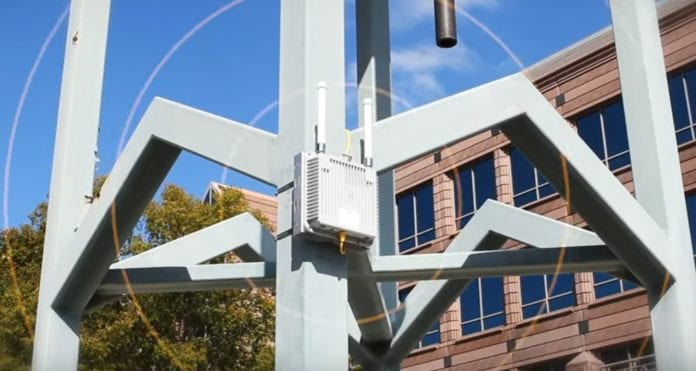This year’s Small Cells Americas Conference focused around talks on “5G,” in-building infrastructure and the “internet of things.” If there is one concept that filled the expo hall and session rooms as much as any other, it was network densification.
What is network densification?
There are three primary ways of adding capacity to a network: buying more spectrum, making that spectrum more efficient and “densifying” the network, according to CommScope. The company’s definition for network densification is “adding more cell sites to increase the amount of available capacity.” Cell sites placed in capacity-strained areas add more capacity where it is most needed and also help offload traffic from surrounding sites. Urban areas and large public venues are candidates for network densification because of the high concentration of mobile users.
A complement to a uniform densification of the macrocell layer is to deploy additional lower-power nodes under the coverage area of a macrocell, according to Telecom Insights. In this heterogeneous or multilayered network deployment, the picocell layer does not need to provide full-area coverage, and can be deployed to increase capacity and achievable data rates where needed.
According to the Institute of Electrical and Electronics Engineers, network densification includes densification over space (e.g, dense deployment of small cells) and frequency (utilizing larger portions of radio spectrum in diverse bands). The group says large-scale cost-effective spatial densification is facilitated by self-organizing networks and intercell interference management, and that the full benefits of network densification can be realized only if it is complemented by backhaul densification and advanced receivers capable of interference cancellation.
Why do we need to densify?
The continuous increase in traffic within mobile broadband systems and continuous increase in required and requested data rates for end users will impact how cellular networks are deployed in the future, according to Telecom Insights. Providing high system capacity and high per-user data rates – requirements for the creation of a 5G network – will require a densification of the radio access network or the deployment of additional network nodes. By increasing the number of cells, the traffic per square-meter can be increased without requiring a corresponding increase in the traffic that needs to be supported per network node, and by increasing the number of network nodes, the base-station-to-terminal distances will be shorter with a corresponding improvement in achievable data rates.
5G and densification
A major component of 5G, which is still not standardized or defined, will be ultra-dense network configurations, particularly in metro areas heavy with users.
“We are not building a network that is 4G; 4G is almost a thing of the past,” said Sprint CFO Tarek Robbiati in an interview with Wireless Week. “We are building a 5G network for the future and 5G networks are fundamentally different to 4G networks. They are all around high capacity and the more spectrum you have the more capacity you have, the more spectrum you deploy the more you can connect customers and the more speed you can give customers across your network and that requires a fair bit of densification.”
In the runup to the Super Bowl, Verizon Wireless and ExteNet Systems worked to deploy some 400 small cells in the downtown area to not only provide capacity needed for Super Bowl fans, but also to improve the wireless experience in the popular tourist destination.
Brian Mecum, Verizon Wireless’ VP of network for the West Area, said “We’re working pretty hard in San Francisco right now, part of our densification efforts for the Super Bowl. Densification is important because people like to use their smartphones. We talk about people who are cord cutters; there’s an awful lot of cord severs in downtown San Francisco.”
This trend is set to continue for the next decade at least, primarily through the provisioning of small cells such as pico and femtocells to support future networks.

